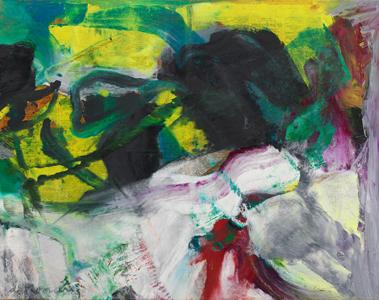National Gallery Shows American Prints
By • January 29, 2015 0 1088

In The Georgetowner’s last issue of 2014, I wrote about the National Gallery of Art exhibition “A Subtle Beauty: Platinum Photographs from the Collection,” which closed Jan. 4. One could see how advances in photography in the late 19th and early 20th century opened the door to an entirely new understanding of composition, value and spatial relationships.
The new photographic technology re-energized artists’ methods and creative visions. However, with the ability of the photograph to capture the existing world, painting and drawing were left to find a new direction of visual communication.
That new direction is traced in another exhibition at the National Gallery. “Modern American Prints and Drawings from the Kainen Collection,” on view through Feb. 1, looks at 20th-century developments in drawing and printmaking. This is a notable perspective to take, since many of art’s great evolutions begin at the molecular level of smaller-scale drawings and prints, where the artist has greater freedom to rapidly experiment.
The first room of this two-gallery exhibition covers the period leading up to World War II, in which artists such as Childe Hassam and Stuart Davis departed from strict representation. The second room moves toward pure abstraction in the postwar period, with works by Jackson Pollock, David Smith and Willem de Kooning.
A surprising piece is Max Weber’s “Repose (Peace)” (1928), a lithograph of three women which reads like a rich mash-up of Rubenesque beauty, impressionist line work and Picasso-Romanesque physiques. It is completely fun and lovely.
Stuart Davis’s lithograph “Place Pasdeloup, No. 2” (1929) is a whimsically minimalist scene that could have inspired every quaint caricature of France, from Looney Tunes to Steve Martin’s stage play “Picasso at the Lapin Agile.” Much less fractured than the other two works of his in the show, this is a lighthearted geometry of pleasant, simple luxury.
Louis Lozowick’s lithograph “Crane” (1929) is of a different ilk, with the stark depiction of the looming industrial machine like an oil rig out of George Stevens’s film “Giant,” echoing the menacing grandeur and architectural fetishism of the Futurists.
In the postwar gallery, there are many works, but none as powerful or enjoyable (to this writer) as those by Arshile Gorky and David Smith. The two drawings by Gorky, simple pen-on-paper from the early ’30s, show the height of the artist’s acumen as an innovator in visual abstraction. As he strived for surrealism and broke boundaries of traditional composition and form, his work would go on to profoundly shape Abstract Expressionism.
David Smith’s “A Letter” (1952) is cryptic and playful, like a Krazy Kat comic strip on hallucinogens. It is strangely intoxicating, occupying a rare arena of something that is both warmly familiar and refreshingly new.
- William de Kooning’s “Untitled.”





